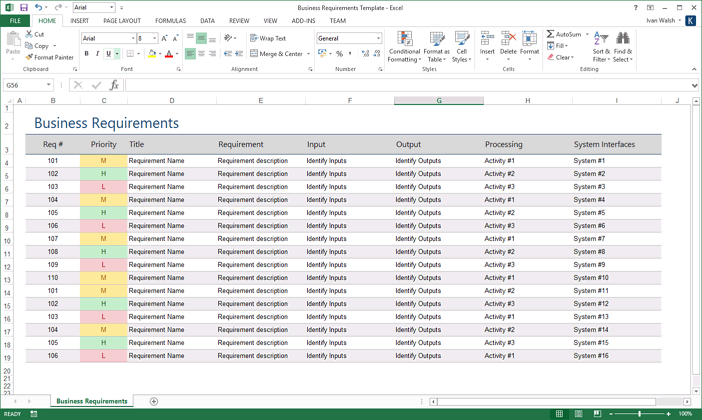Proposal Writing Tips
How to Write Better Business Requirements
Summary: Every project starts with requirements. To improve the effectiveness of your business requirements you must establish a common understanding between the project sponsor, customers, developers and stakeholders to serve as a road-map for product development.
This Klariti tutorial will explain how to write a Business Requirements Document (BRD). It covers project scope, cost estimation, scheduling, requirements gathering, software development, testing, and release management.
[Learn more about this business requirement template]
How to Write Better Business Requirements
One of the cardinal mistakes of novice business writers is to focus on their product and assume the reader will have the time, patience and interest to read their material.
I guess this is forgivable when someone is charged up and wants to get the message out. And it does work, well, to a degree.
The message is sent out but does anyone likes what they read? And will they be so patient the next time?
How to write from the client’s perspective
One way is to step back and see how you can link your client’s strategic needs – what holds their business together – and what you have on offer.
By doing this, you’re putting yourself in their shoes and writing the document so that it answers the issues they have. This actually makes your life simpler. Instead of writing about features, specifications, and other functionality you can dovetail your product offerings to their exact needs.
But…
First you need to identify their strategic needs.
Indeed, the fastest way to lose business is to write business proposals/business plan from your perspective and not that of your clients.
The second is to overlook how the proposed solution actually meets the client’s requirements.
You’d think this would be obvious, right? But many proposals I review miss this point. The proposed solution and the actual business requirements are very far apart.
Identify Strategic Goals
Your business proposal should focus on the client’s needs and how your solution or service solve their problem. This means that before you write the proposal,
You need to read the Request For Proposal, Business Cases, Annual Reports and other collateral that gives you an insight into their business operations. Ask yourself: what it is the client really wants to accomplish.
In other words, does the Request For Proposal, your solution and their Strategic Plan all connect. If not, revise your proposal and close the gaps between their needs and your offering. Indeed, the more knowledge you have of the client’s strategic goals, and how they impact their business, the more likely your proposal will align with their needs.
How to do this?
Examine their strategic goals from these four different angles:
- Business Strategy – how can you increase their market share; raise profitability; reduce overhead and marketing the product line.
- Technical Strategy – how does your product automate labor-intensive processes, enhance quality with automated machining.
- Social Strategy – in what way can you enhance employee morale, reduce turnover, increase brand recognition, and change consumer attitudes.
- Personal Strategy – and how can you improve career development opportunities and improve employee issues.
Look at the material you have gathered about the client and
- Identify
- List
- Number and
- Rank
the strategic goals.
Revise the Business Proposal so that it addresses each of these strategic goals.
How to Prioritize Strategic Goals
I use an Excel spreadsheet (matrix) to captures the requirements in one column and then cross-references it against our products key features. You can develop something similar that allows you to map your technical solution against their Request For Proposal or other business documents.
Business Requirements spreadsheet
In next week’s article, I will look at how to identify the client’s strategic goals. Once you have identified these, you can fine-tune your proposal to match these goals.
Conclusion
Over to you.
Does this approach work? Where do you see the connection between Request For Proposals and identifying Strategic Goals? Also, what other points should business writers bear in mind when developing their Business Proposals.


